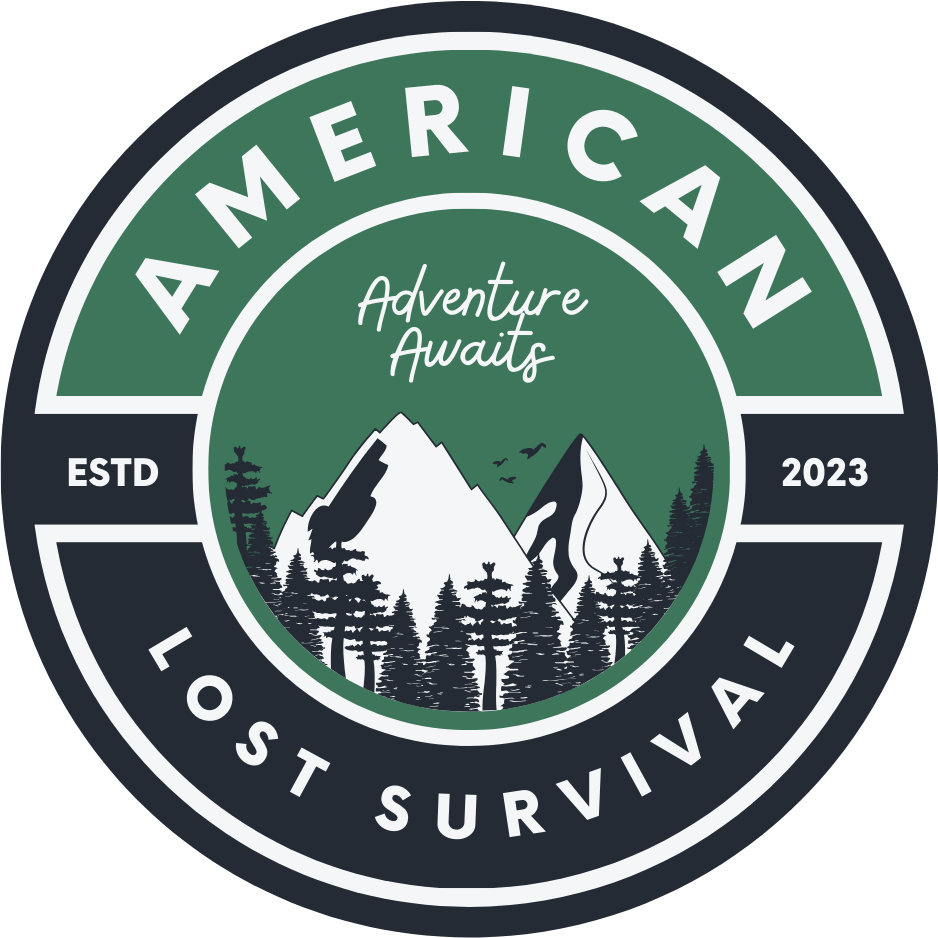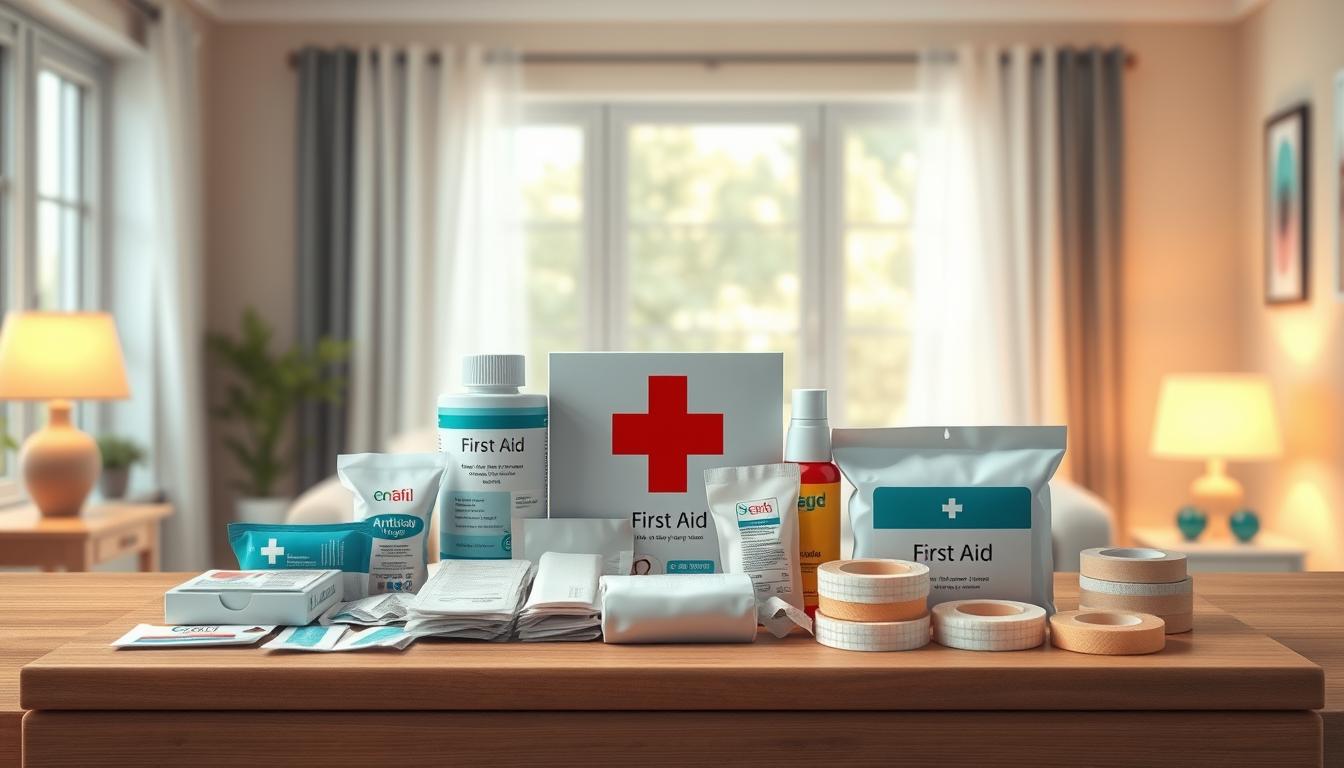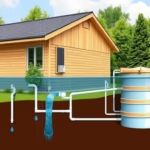Ever thought you could handle an injury at home? Knowing how to treat common injuries isn’t just about having a first aid kit. It’s about having the skills and knowledge to act fast in emergencies. Whether it’s a cut from the kitchen or a burn from cooking, being able to care for injuries at home is key.
Many households face minor injuries every day. Learning some basic first aid tips can make your home safer and more prepared. This is important for you and your loved ones.
Key Takeaways
- Common injuries like cuts and burns are frequent in households, highlighting the need for first aid knowledge.
- Approximately 3% of burns require professional medical treatment, stressing the importance of knowing how to cool a burn appropriately.
- Managing wounds correctly can reduce the risk of infection by up to 50% when topical antibiotics are applied.
- Regularly checking and restocking your first aid kit is critical for effective injury management.
- Many family members, including children, are at higher risk for minor injuries, making immediate response knowledge even more critical.
- Understanding first aid basics can help you confidently address minor injuries until professional help is available.
- A large percentage of American households lack a complete first aid kit, which could hinder emergency preparedness.
Understanding First Aid Basics
First aid is the immediate care given to people with injuries or illnesses. It can prevent long-term damage. Knowing how to respond is key.
It starts with checking the scene’s safety, figuring out the injury, and treating it right. Knowing how to handle common injuries is important.
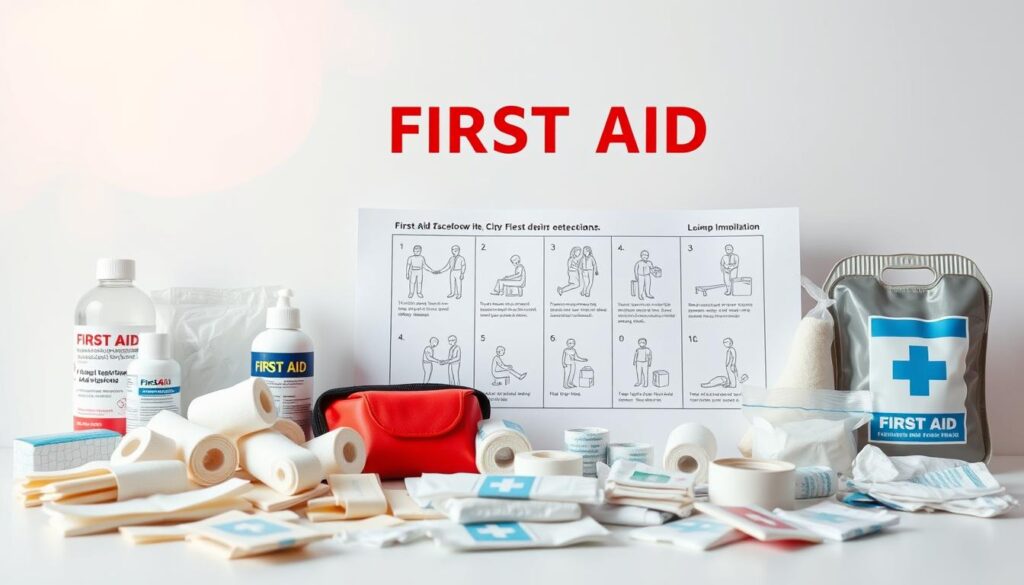
For minor wounds, soap and water are often enough. But, many people don’t clean wounds properly. This can slow healing.
About 80% of minor cuts and scrapes can be treated at home. Learning basic first aid is helpful. Handling splinters and other minor injuries is also part of self-care.
Burns are common, with most being first-degree. Second-degree burns are less common, and third-degree burns are rare. Knowing this helps manage burns at home.
Heat-related illnesses, like heat exhaustion, need proper temperature control. This is to avoid serious problems.
=> 10 Medical Supplies You Need To Stockpile Before It’s Too Late
Creating a Well-Stocked First Aid Kit
A good first aid kit is key for managing injuries at home. It should have all the necessary medical supplies for different situations. The American Academy of Family Physicians says every home should have one.
It should include bandages, antiseptics, and non-latex gloves. These items help prevent infection during minor injuries. It’s important to check the kit every six months to keep it ready.
For those who like to treat injuries themselves, making a custom kit is a good idea. Add items like adhesive tape, sterile gauze, and antibiotic ointments. Don’t forget pain relievers like acetaminophen or ibuprofen. A thermometer is also useful for checking fever.
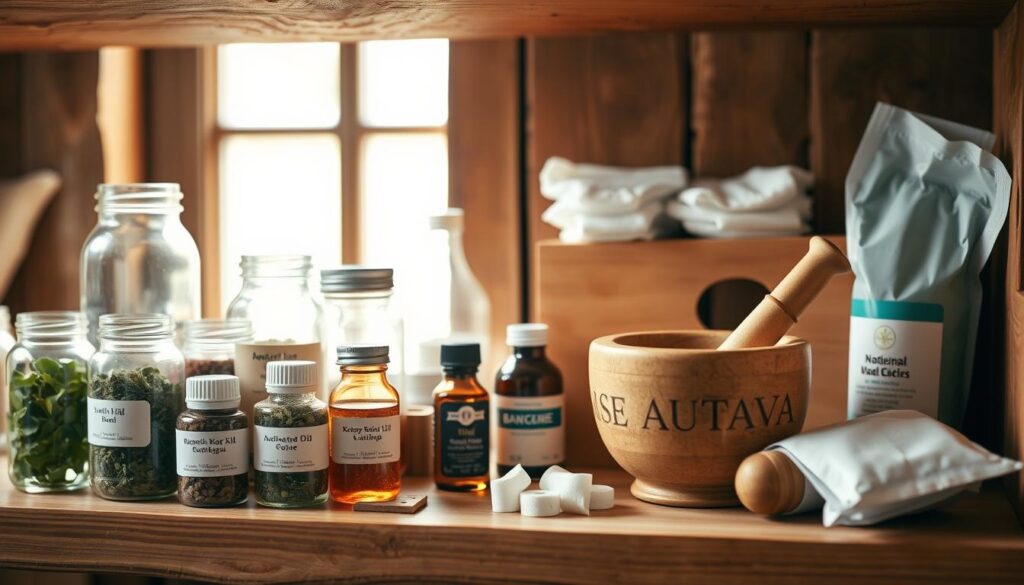
Emergency responders say many calls could be avoided with the right care. So, it’s smart to have a first aid kit at home and in the car.
Write the date you last used the first aid kit on it. This way, you’ll remember when it’s time to check or restock. A basic first aid kit can handle up to 70% of household accidents. For bigger emergencies, think about adding an automated external defibrillator (AED). Also, remember to include aspirin for adults with chest pain.
Related: Top 10 Over the Counter Medication Every Home Should Have
How to Treat Common Injuries at Home
Many minor injuries can be managed at home, reducing the need for a doctor. For example, twisting an ankle or pulling a muscle can often be treated without a visit to the doctor. It’s wise to wait 24 hours to see if the injury gets better.
After 24 hours, check if swelling goes down and if you can walk better. This helps you decide if you need to see a doctor.
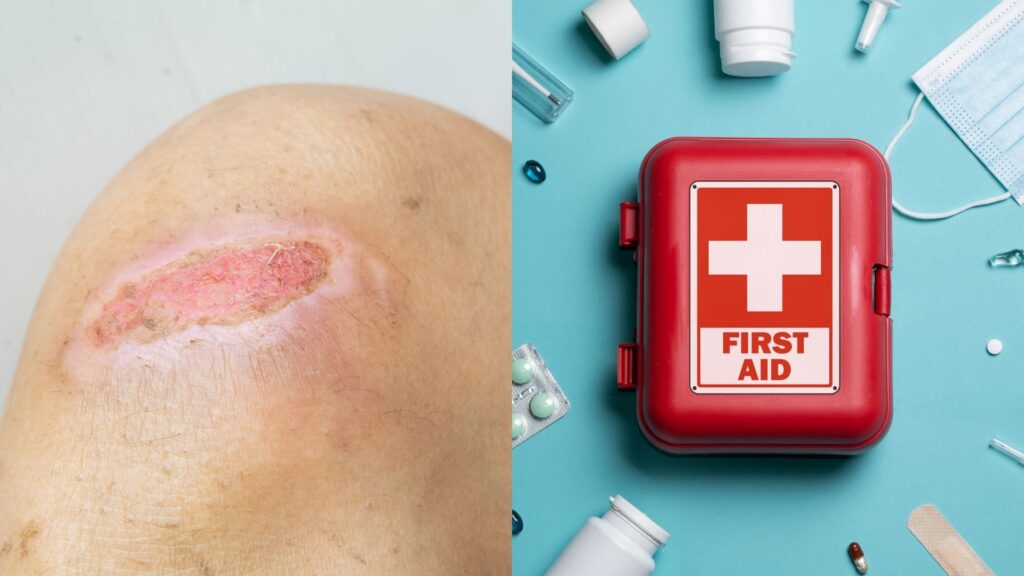
Studies show that nearly 48% of people with muscle injuries can handle them at home. Using compression and elevation can help reduce swelling. Applying heat can improve blood flow and help healing, but ice might slow healing down.
Be careful with over-the-counter pain meds, as up to 70% might not check their injuries well. Doing light exercises can help muscles heal without making things worse. If swelling lasts 3 to 4 days, it might need more treatment.
Knowing when to see a doctor is key. Watch for signs of infection like redness, warmth, and pus. With the right care, treating minor injuries at home can be safe and effective.
Treating Cuts and Scrapes
Minor cuts and scrapes happen often, making up about 60% of home injuries. It’s important to treat them quickly to avoid infections. Start by washing your hands well before touching the wound.
Apply gentle pressure to stop bleeding. Most small cuts and scrapes will stop bleeding by themselves. About 50% need no extra help.
Wash the area under running water to lower infection risk. This is in line with 70% of minor wound care advice. Then, put on antibiotic ointment to protect the wound and cut infection risk by 30%.
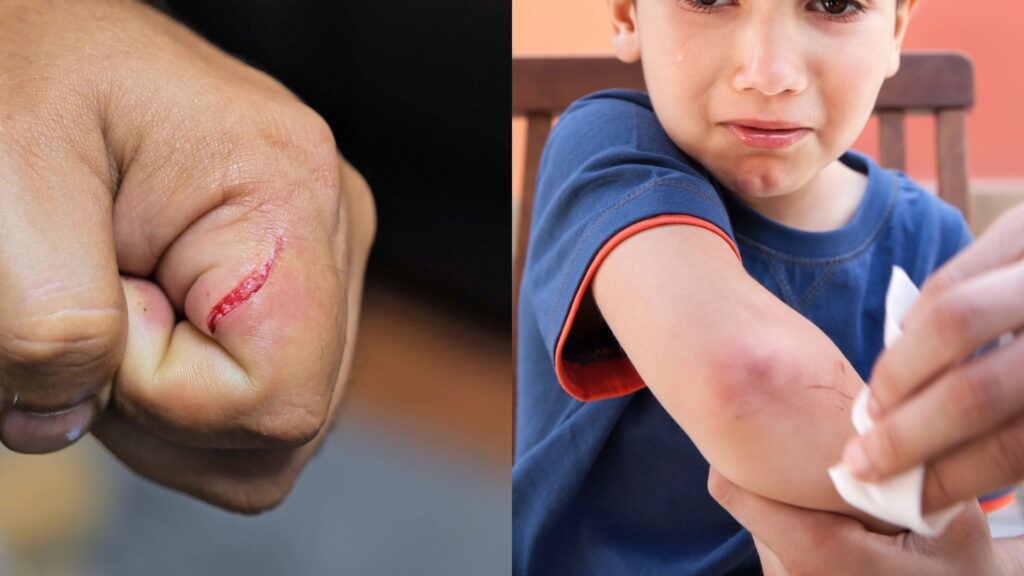
Use a bandage to help the wound heal. Change the dressing every 24 hours if it gets dirty. Watch for signs of infection like redness, swelling, and warmth. These signs affect about 10% of untreated cuts and scrapes.
Deeper cuts than 1/4 inch might need stitches. If you think it’s infected or hurts more, get medical help. Knowing how to treat injuries at home is key to avoiding problems with cuts and scrapes.
=> The Home Doctor – Practical Medicine for Every Household (Video)
Managing Burns Effectively
Burns can happen in many places, like the kitchen. Kids are often hurt by hot drinks, soups, and foods from the microwave. For small burns, you can treat them at home.
First, cool the burn with water for 10 minutes. This helps protect the skin. For minor burns, you don’t need to see a doctor.
But, for more serious burns with blisters, you need to take extra steps. Use antibiotic ointment and a bandage to stop infection. Don’t pop blisters, as they help keep the area clean.
Use lotions like aloe vera or cocoa butter to keep the skin moist. You can also take pain relievers like ibuprofen or acetaminophen. But, watch for signs you need to go to the hospital, like big burns or ones on your face, hands, or feet.
Keeping your water heater below 120°F can also prevent burns. For small burns, home care works well. Always be careful in the kitchen to avoid burns.
Handling Sprains and Strains

Sprains and strains are common injuries that need quick attention to heal and reduce pain. The R.I.C.E. method—Rest, Ice, Compression, and Elevation—is key for treating these injuries. It’s important for quick recovery.
Resting the injured area for 48 to 72 hours is essential. Don’t put weight on the affected joint to avoid more damage. Ice should be applied for 15 to 20 minutes, three to four times a day. This helps reduce swelling and pain.
Compression with elastic bandages supports the injury. Elevating the area above heart level also helps by reducing fluid buildup.
It’s important to know the symptoms. Swelling, pain, and bruising are common signs. The severity of the injury depends on how bad these symptoms are. Most sprains and strains happen in the ankles, knees, and wrists.
If severe pain happens when touching or moving the injured area, see a doctor. Also, watch for signs like trouble bearing weight, more bruising, numbness, or feeling like “pins and needles.”
Many people don’t take the right steps after an injury. Only 30% use proper first aid right away. Recovery times vary. Mild injuries usually heal in two to three weeks, but serious ones might need physical therapy.
To avoid future injuries, do proper warm-ups and stretches. Also, use the right protective gear for sports.
Addressing Insect Bites and Stings
Insect bites can be minor or serious. Knowing how to handle them is key. Start by washing the bite with soap and water to avoid infection. Remove any stinger quickly to ease pain.
Ice or a cold compress can help with swelling and pain. Use it for 10 to 20 minutes. For itching, try hydrocortisone cream or calamine lotion. Antihistamines like cetirizine or loratadine can also help with mild allergies.
It’s important to know the signs of an allergy. Severe reactions to stings can happen in 0.5% to 3% of people. Look out for trouble breathing, facial swelling, dizziness, or a weak pulse. These need immediate medical help.
Bees, wasps, and fire ants are very dangerous. They can cause severe allergic reactions. In the U.S., bee stings kill about 62 people each year. Use DEET-based repellents to avoid bites. But, don’t use DEET on babies under two months.
Knowing how to deal with insect bites is important. By following these tips, you can handle symptoms safely. This ensures proper care for insect-related incidents.
How to Recognize and Treat Nosebleeds
Nosebleeds, also known as epistaxis, are common and usually not serious. They often happen due to direct injury, with most being in the front part of the nose. To manage them at home, follow some simple steps.
First, lean forward to stop blood from going down your throat. Then, pinch your nostrils together to help the blood clot. Keep the pressure for at least 10-15 minutes.
If the bleeding doesn’t stop after 15 minutes, you might need to see a doctor. Nosebleeds can sometimes be a sign of a bigger health issue, like liver disease or blood clotting problems. Taking medicines that thin your blood can also make nosebleeds worse.
Keeping your environment humid can help prevent future nosebleeds. Use nasal saline sprays and humidifiers to do this. About 60% of people will have at least one nosebleed in their life. Knowing how to treat them can help you deal with this common issue.
Common First Aid Techniques for Children
Children often get hurt, so knowing first aid is key for caregivers. It’s important to treat minor injuries like cuts, scrapes, and bruises with care. Explaining what’s happening can help kids feel less scared.
Stay calm and use gentle words when you’re helping. This helps kids feel safe during treatment.
For cuts and scrapes, press the area for 5 to 10 minutes to stop bleeding. If it keeps bleeding, call a doctor. For burns, cool the area with water for 5 to 10 minutes to ease pain.
Teach kids to wear protective gear when playing. This can help prevent injuries.
Sprains and strains are common in kids who are active. Use the R.I.C.E. method: Rest, Ice, Compression, and Elevation. Elevating the injured limb helps it heal faster.
First aid courses can teach parents how to handle injuries. Keep emergency numbers handy and know where to find medical help.
Teach kids how to respond to injuries through fun activities or stories. This way, they can handle situations on their own. Use resources from trusted groups to learn more about treating injuries at home.
Conclusion
Managing injuries at home is very important. This article showed how to use basic first aid and keep a first aid kit ready. It also gave tips on treating common injuries like sprains, strains, and burns.
Knowing how to treat injuries at home can help a lot. About 75% of sports injuries can be handled at home. But, many people go to the doctor for things that first aid can fix.
Staying informed and prepared is key. It helps prevent injuries and ensures quick recovery when they do happen. Taking care of yourself and staying hydrated can help avoid injuries and speed up healing at home.
